December 24, 2023 – It has become a tradition over the last few years to do a POTA activation on Christmas Eve. Christine is Danish, so we have a big celebration on Little Yule, December 23, and again on Christmas day, but Christmas eve is sandwiched in the middle with not much going on. This is especially true with the kids now out of the house. So what could be better than going out and doing a park. This year I selected a park that I hadn’t been to since December of last year, K-4310 Mead State Wildlife Area.
Mead State Wildlife Area
The Mead State Wildlife Area consists of 33,000 acres of lowland, marsh, and small lakes straddling the edges of Marathon, Wood, and Portage counties in central Wisconsin. The Mead is best known as being a bird estuary and countless numbers of migratory birds and native birds can be spotted there year round. The history of this land goes back almost 9,000 years ago when the first Paleo-Indians hunted there, but its history gets really interesting at about the turn of the 20th century.
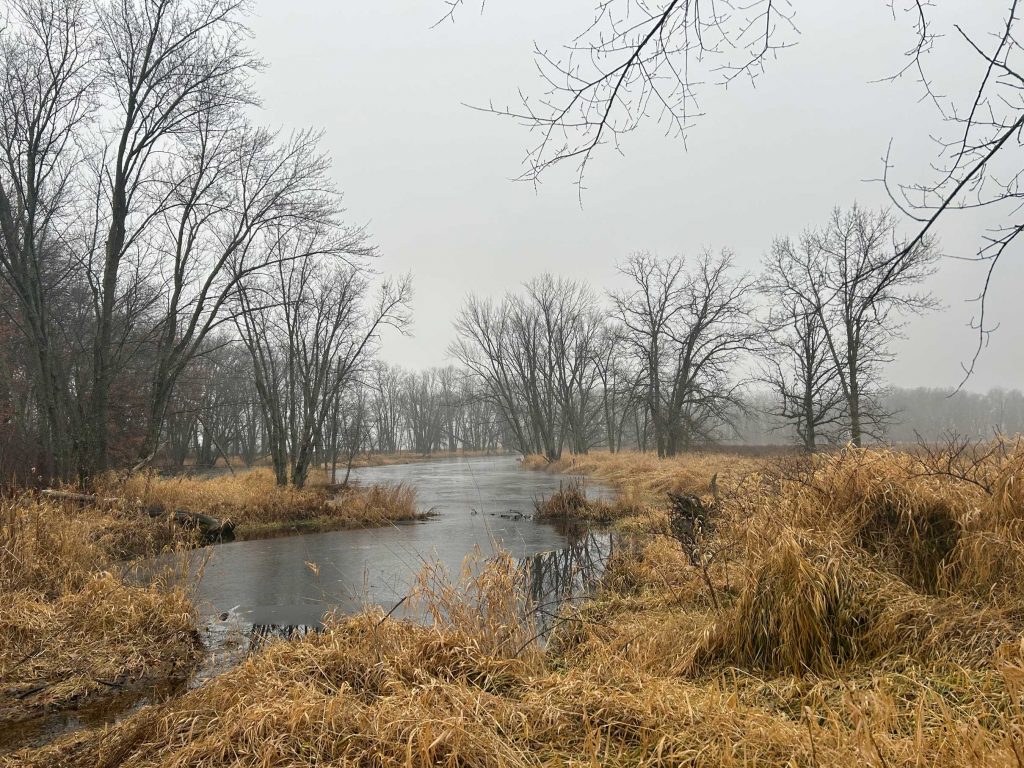
In the early 1900’s logging was still king in northern Wisconsin and the Wisconsin river, of which the Little Eau Claire river that flows through the Mead is a tributary. Harnessing the river and moving logs down to the mills in Wausau, Stevens Point, and Wisconsin Rapids was important. It was believed that if these lowlands could be dredged and the and water channeled, that there would not only be abundant farm lands but also limitless water for transporting logs. By 1920, George Mead, the president of the Consolidated paper mill in Wisconsin Rapids bought 20,000 acres of land and proceeded to dredge. Unfortunately, the land wasn’t that good for farming and logging pretty much bottomed out by the early 1930’s as the forests in Northern Wisconsin were almost completely cut over.
Having this land on the books wasn’t good for the mill and a growing environmental movement in the 1940s and 50s led George’s son Stanton Mead to donate the land to the State to create a nature preserve and wildlife area. Over the years the Mead State Wildlife Area has grown to over 33,000 acres and hosts a diverse amount of flora and bird species. The scars of the dredging operation and still visible and offer an excellent habit for countless animals.
Setup
I’ve done the Mead twice before, both times I’ve set up near the visitors center. This year, since there wasn’t any snow on the ground yet, and the temperatures were a unseasonable 40 degrees, I decided to try out one of the many parking spots along the lIttle Eau Claire River. I found a beautiful spot along the river that was a couple miles north of the visitor center on County Highway S.
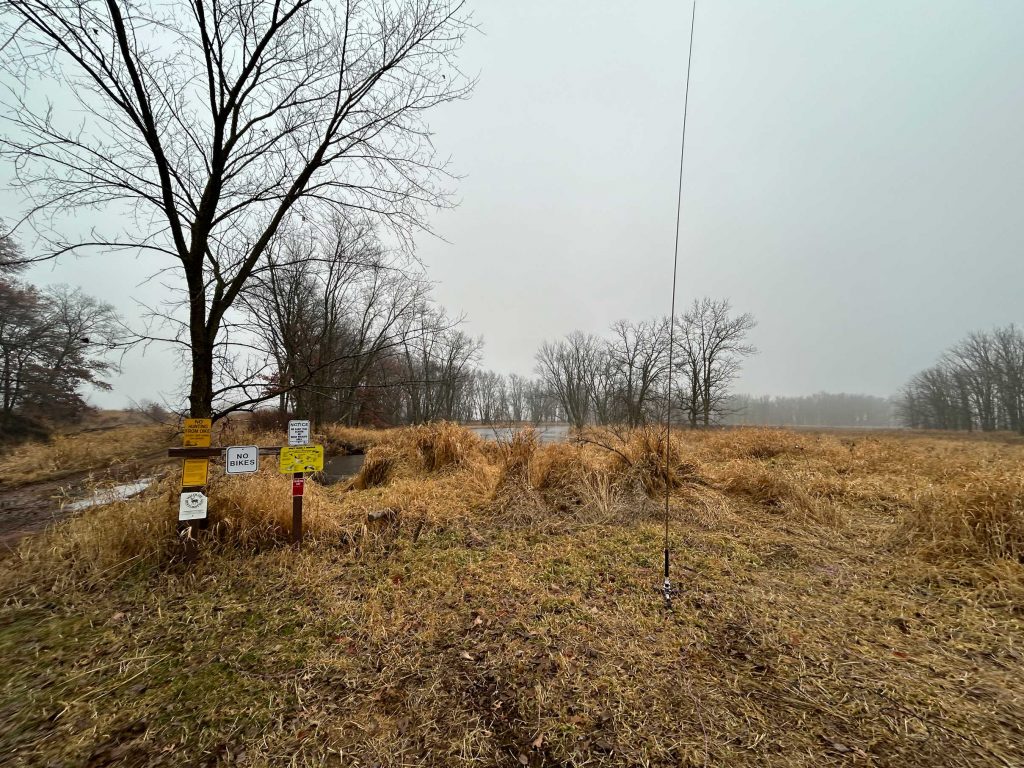
I’ve been testing the Chameleon Multi Configuration Coil (MCC) which is part of their PRV or Portable Resonant Vertical kit and wanted to use this activation to see how it performed when I added the Chameleon 17 foot stainless whip. The winds were calm to I used their carbon fiber tripod as the base, screwed on the MCC, added the whip to the top and extended it to the full 17 feet. For ground radials, instead of using the four radials provided by Chameleon, I deployed 8 16 foot wires (in two bundles of four with spring clips on the end). This is my standard package when I use radials instead of the ground screen. At 17 feet, the whip was a little long for the 20 meter band, so checking it with the analyzer, I collapsed one section about halfway (approximately 12 inches) until I had a match of about 1.3:1. I fed the antenna with 50 feet of coax attached to my FT-891 running 50 watts. I was ready to get on the air on 20 meters.
The Activation
I kind of figured that being the holidays, the bands would be busy and that activating on 20 meters, I would have some massive pileups. I was not wrong. My goal for the activation, since I had about three hours before needed to leave for home, was to get on 20 and work the pile up for as long as I could. Phone service was marginal but I had one bar of LTE, so I found an open frequency at 14.257 MHz, spotted myself and was off to the races.
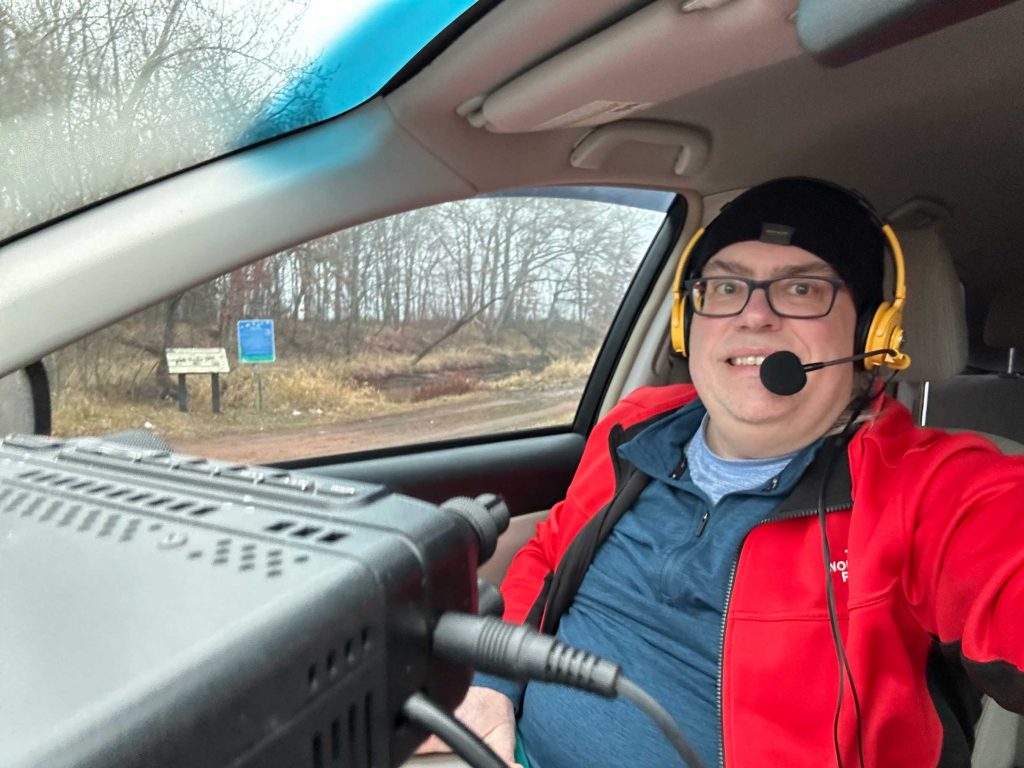
The band being busy was an understatement, it took me less than 2 minutes to have a solid pileup going and it only got worse. It was so deep, that I would take periodic breaks just to do park to park and QRP stations. In doing so, I would then log 4-6 park to park stations in a row. I kept at it, though. I wanted to see how long this pileup could last and what it would take to work them all.
Signal reports were excellent, most stations were a true 59 or better. 20 meters had been running short as of late, but this day that didn’t seem to be the case. I got good propagation on the band, favoring the east coast, but a fair amount of lower midwest and Rocky Mountain stations.
After 257 contacts things had really started to slow down. My last contacts were a park to park in Michigan, KE8UTX and KB8QJF where at two parks, we did the round robin with the microphone and got a hearty ‘Merry Christmas’ at once from the both of them as we signed 73. That was a pretty fitting place to stop.
Stretching my legs for a few minutes, I felt like I couldn’t just stop at 257, I was so close to 300 that I needed to hit that mark. Since running 20 meters with the full whip didn’t give the coil much of a workout, I decided to switch to the 40 meter band. I fully extended the whip, and raised the coil until I got an SWR that was around 1.7:1. Not bad, not perfect, but good enough.
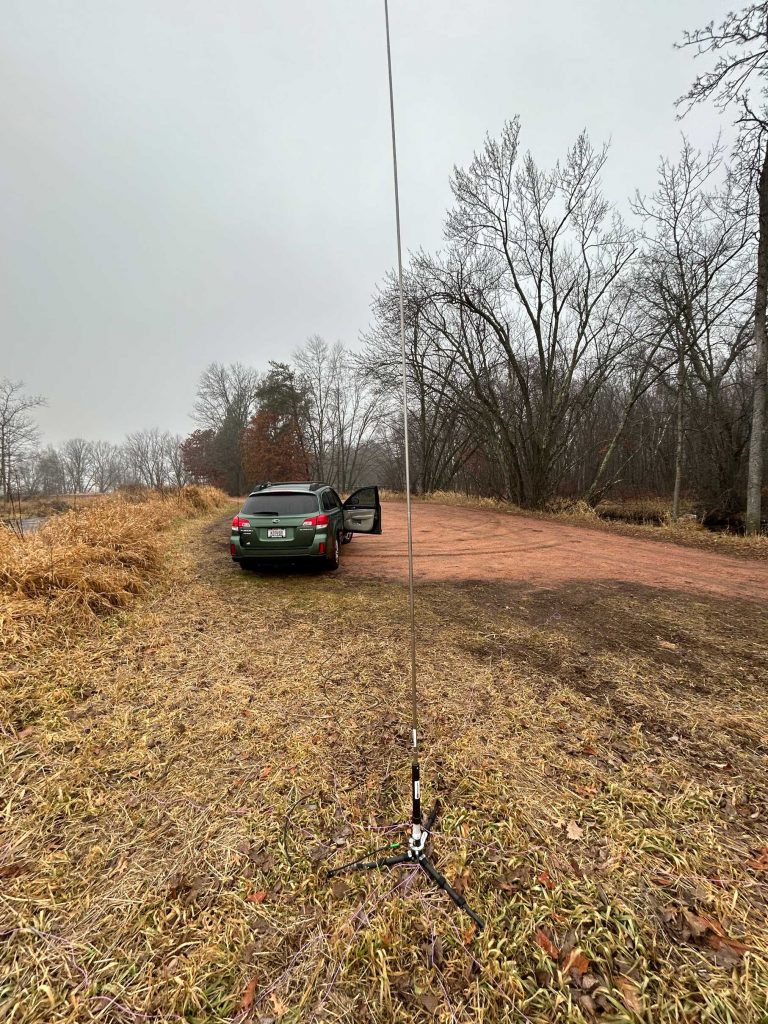
It was already after 20:00 UTC, so I knew that 40 meters above 7200KHz was going to be full of international broadcasters. Fortunately I found an open spot at 7187 KHz and set up camp there. It didn’t take long to get a pile up going, although the 40 meter pile up wasn’t as massive as the 20 meter one. It was good enough, though for me to work 38 stations in about 30 minutes with one of the last ones being Shane KD9NJJ over near St Croix Falls, WI. 40 meters was starting to go long and I probably could’ve worked many of the 20 meter stations I worked earlier if I stayed another hour. But sunset was near, so I stopped at 20:50 UTC with 300 contacts in the log.
Conclusion
This was a big activation, there is no doubt about that. I think this may have been my largest single session contact log ever. I’ve done a few QSO parties were I got more contacts, but nothing like this. The combination of good band conditions, a holiday weekend, and favorable antenna setup all worked together to generate this massive log.
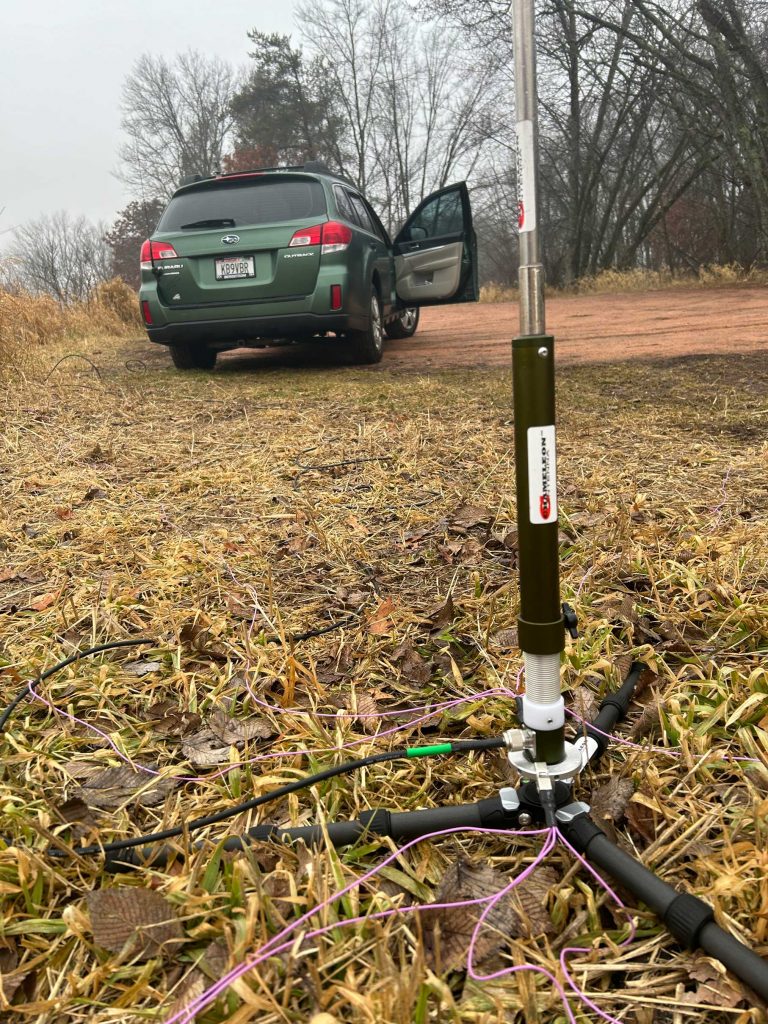
The Chameleon PRV kit worked very well. I like their MCC coil, it is a solid product and it really seems to perform. Some people complain about the the price, but with Chameleon, you get what you pay for. I not terribly fond of their non-resonant antennas, but I think they really have something good going with their resonant coil. I still prefer using the 213 inch whip for the higher bands and Wolf River Sporty Forty for 40 meters, but I may put this antenna in the rotation for a change of pace. I certainly like this coil much better than the Gabil antenna that I seem to still struggle with (I can’t get a good match on 20m with the Gabil to save my life). I’ll have to asses if the MCC’s size is compact enough to be my QRP vertical kit.
I need to get back to the Mead more often, it’s only a 30 minute drive and the scenery is awesome. I tend to avoid it during the summer months due to bugs, but it is a bird watching mecca. I guarantee I will be back soon.
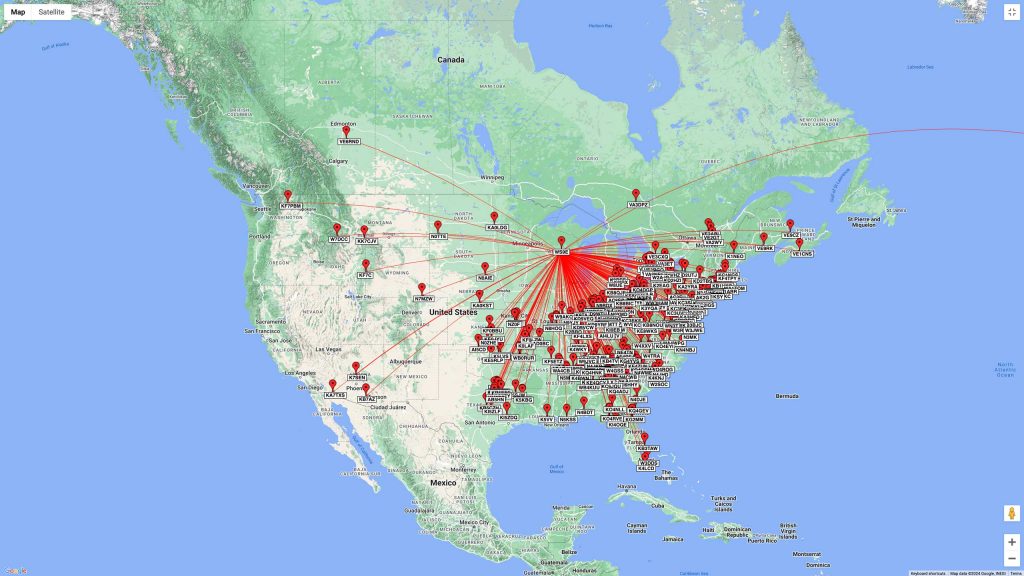
K-4310 Mead Wildlife Area 20 meter contacts, December 24, 2023
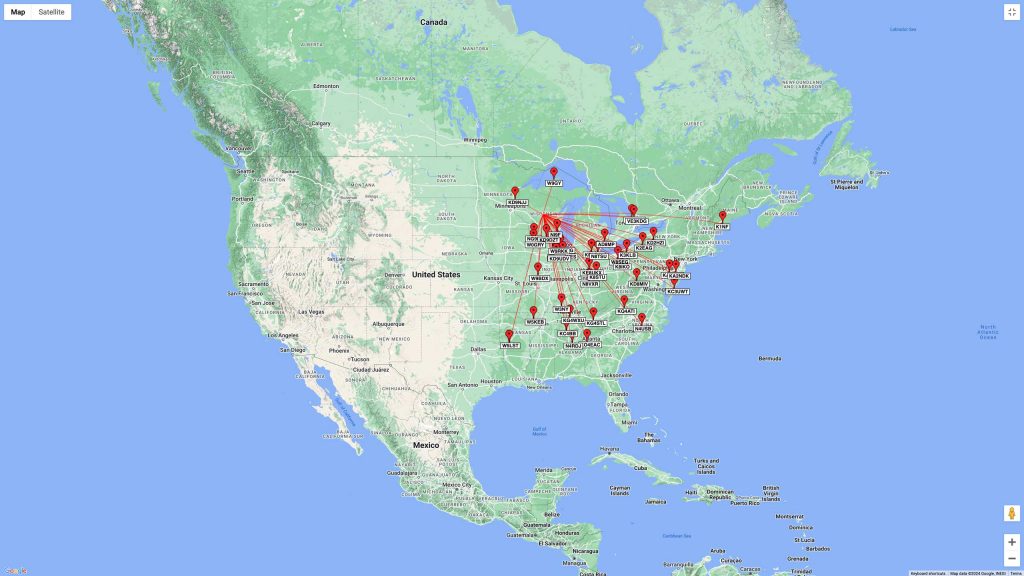
K-4310 Mead Wildlife Area 40 meter contacts, December 24, 2023
Contact maps courtesy of qsomap.com
PRV POTA heavy antenna kit courtesy of Chameleon Antennas.
If you go
Mead Wildlife Area
201517 County Rd S
Milladore, WI 54454
(Mead visitor center address)
There are countless parking areas in the Mead suitable for activations. Cell service can be marginal to non existent in most of them. Check your provider’s map for service availability.
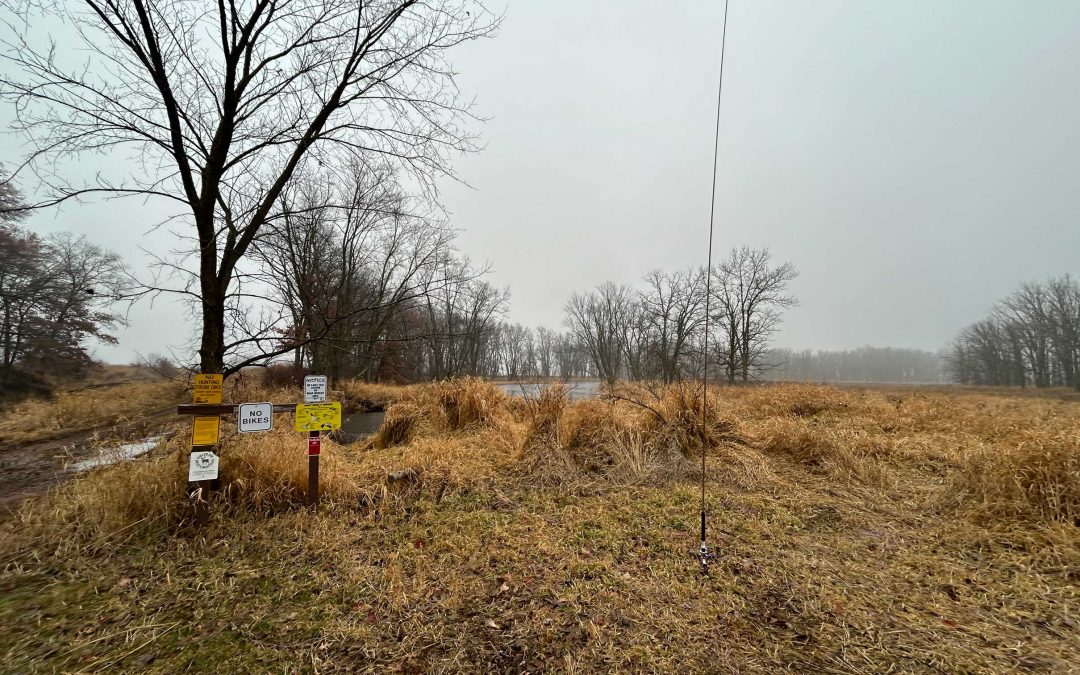
Recent Comments